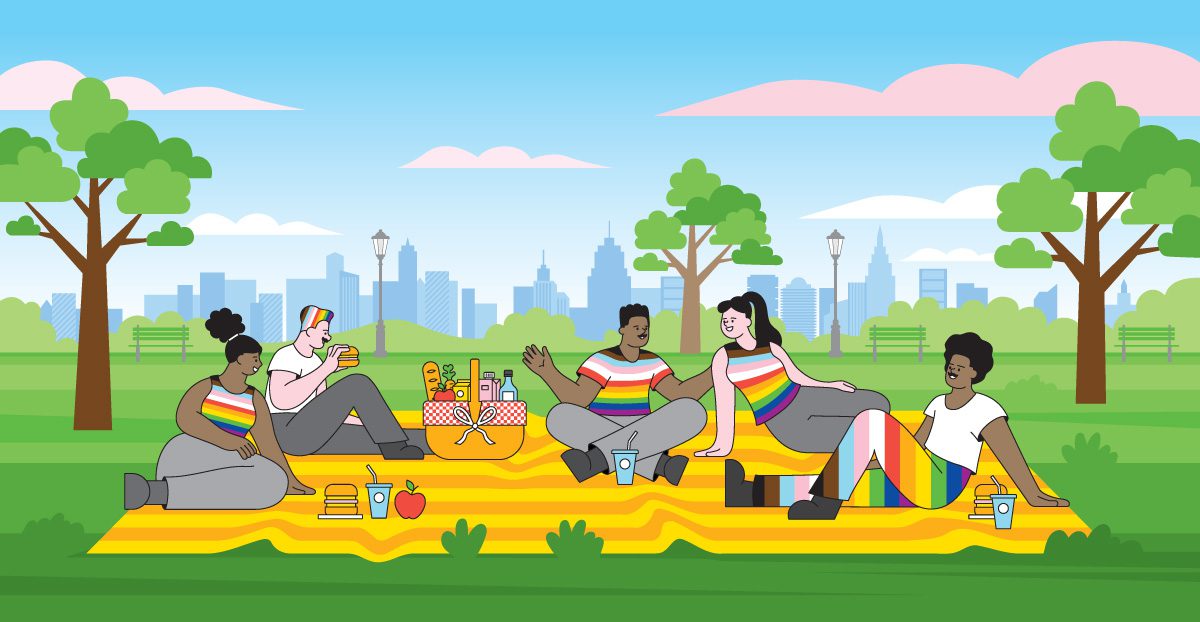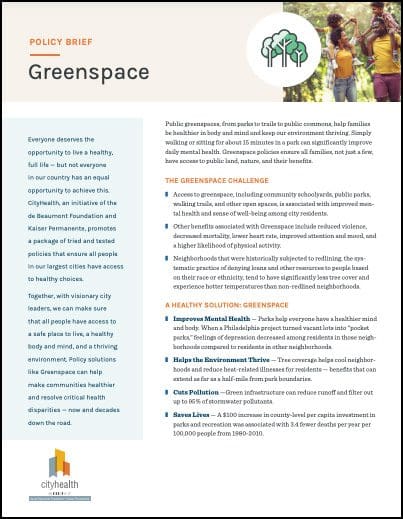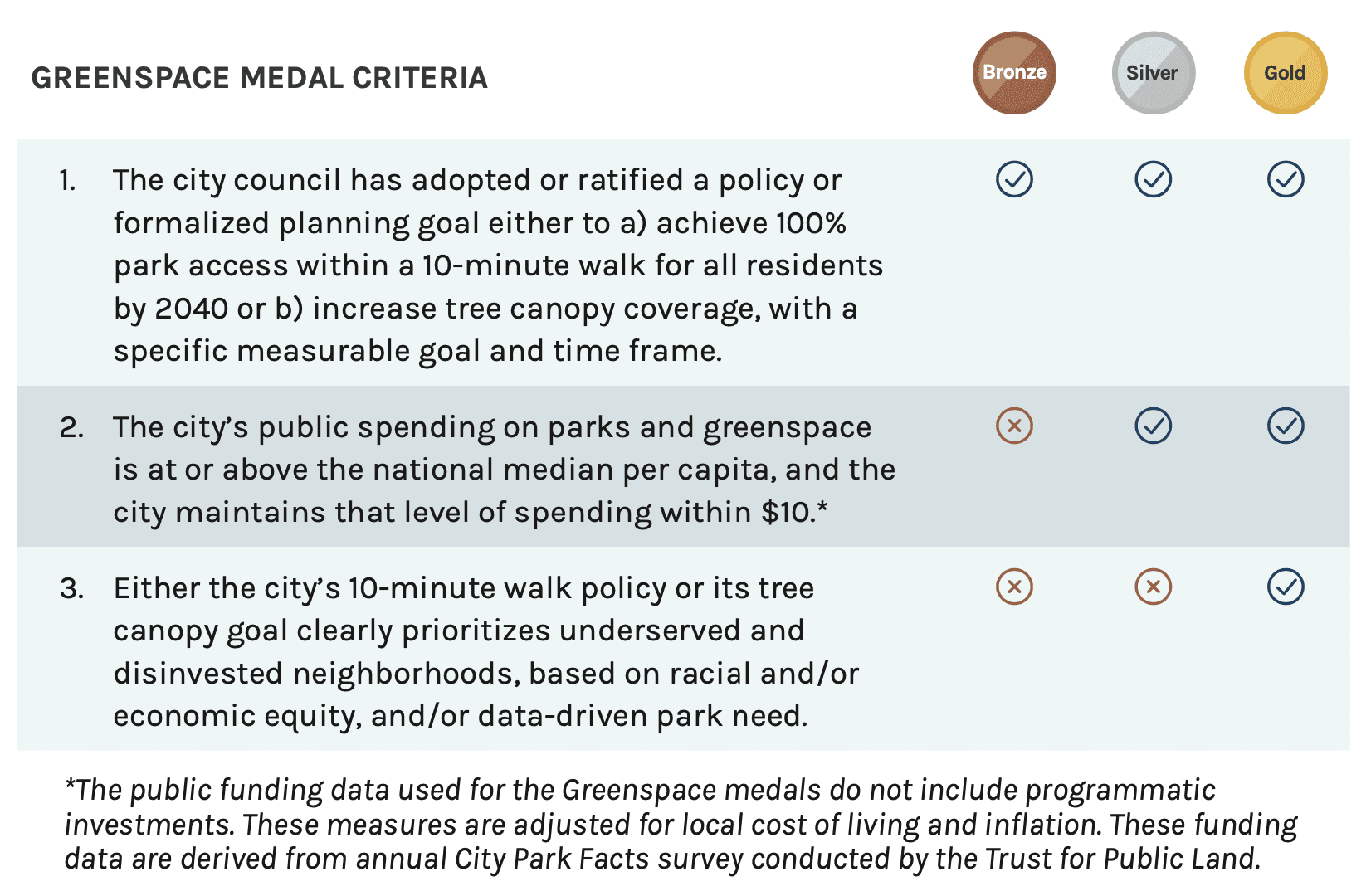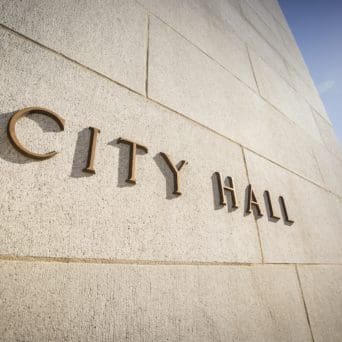This is the seventh blog in our monthly series exploring CityHealth’s 2.0 policy package. Sign up for our newsletter to learn about new policy solutions, tools, and resources.
Do you have 15 minutes to spare? That’s how long you have to sit or walk in a park each day to significantly improve your mental health, according to one study. In urban areas, greenspace — from public parks and walking trails to community schoolyards and other open spaces — helps families be healthier in body and mind and keep our environment thriving. When city leaders adopt policies that improve and extend access to greenspace, they’re prioritizing the health of both their residents and the natural spaces in our communities.
This month, we’re continuing our blog series exploring CityHealth’s 2.0 policy package with an evidence-based policy solution that promotes both the well-being of our communities and our environment. Greenspace policies ensure all families have access to public land, nature, and their benefits.
The Challenge: 100 Million Americans Lack Greenspace Access
More than 100 million Americans — including 28 million children — don’t have a park within a 10-minute walk of home. Areas that lack greenspace are shown to have elevated levels of air and noise pollution, increased air temperatures, and other environmental hazards. Spending time in nature can lead to positive health effects including a lower heart rate, reduced stress, increased physical activity, lower health care costs, and improved cognitive function. In addition to supporting individual well-being, access to greenspace can also bolster community health and safety; studies suggest that areas with greenspace are associated with reduced violence and decreased mortality.
Where urban greenspace does exist, access is often not shared equally — with significant health equity implications. Decades of systemic racism and the lingering effects of restrictive policies in cities continue to impact communities of color. In areas that were historically subjected to redlining and other exclusionary policies, residents are even less likely to have access to greenspace. These neighborhoods tend to have significantly less tree cover and experience hotter temperatures than non-redlined neighborhoods — increasing the risk of heat-related illness and worsening health outcomes for residents, particularly as global temperatures rise. By making equitable investments in greenspace, local leaders can tackle these long-standing disparities and improve health for everyone in their communities.

Greenspace Policies: Increasing Equitable Park Access
Cities that implement Greenspace policies show a commitment to improving the health of their residents and the environment. The myriad benefits from these policy solutions range from promoting environmental health to improving mental health to saving lives. Cities like Atlanta are using greenspace to reduce runoff and filter out stormwater pollutants, which helps to improve water quality across the city. Greenspace’s impact on mental health has been heavily documented, leading to outcomes such as improving attention span and helping to mitigate symptoms of depression and anxiety. And one study found that a $100 increase in county-level per capita investment in parks and recreation was associated with 3.4 fewer deaths per year per 100,000 people, from 1980-2010.

Download our Greenspace policy brief
Local leaders are taking bold steps to ensure all of their residents can take advantage of the health benefits Greenspace policies can offer. In Pittsburgh, 91% of residents live within a 10-minute walk of a park — but that still leaves 28,000 people who don’t have ready access to greenspace. In response, in 2018, former Mayor William Peduto unveiled the city’s OnePGH initiative — Pittsburgh’s first comprehensive resiliency strategy — which included a commitment that every resident will live within a 10-minute walk to a park by 2030. The city also aims to stabilize its tree canopy and increase climate resilience by planting 100,000 trees as part of its equitable street tree investment strategy.
The Trust for Public Land (TPL) — CityHealth’s subject matter expert and technical assistance partner for Greenspace — works with cities to increase greenspace access to help sustain healthy, equitable, and resilient communities. TPL releases its annual ParkScore ratings, which measures cities according to five categories of an excellent city park system: access, investment, amenities, acreage, and equity.
Earning CityHealth Gold
Starting in 2022, CityHealth will assess the nation’s 75 largest cities on their Greenspace policies. Cities can earn a gold, silver, or bronze medal based on how the city performs on three key criteria:

CityHealth is a resource for city leaders, policymakers, and advocates pursuing policy change that can help all residents live healthy, full lives. Have a question about Greenspace or any of our other policies? Please feel free to send us an email, and join us to learn more about the tools, research, and technical assistance opportunities from CityHealth and our partners.


 Katrina Forrest, J.D., and Catherine Patterson, MPP, are CityHealth’s Co-Executive Directors.
Katrina Forrest, J.D., and Catherine Patterson, MPP, are CityHealth’s Co-Executive Directors. 

